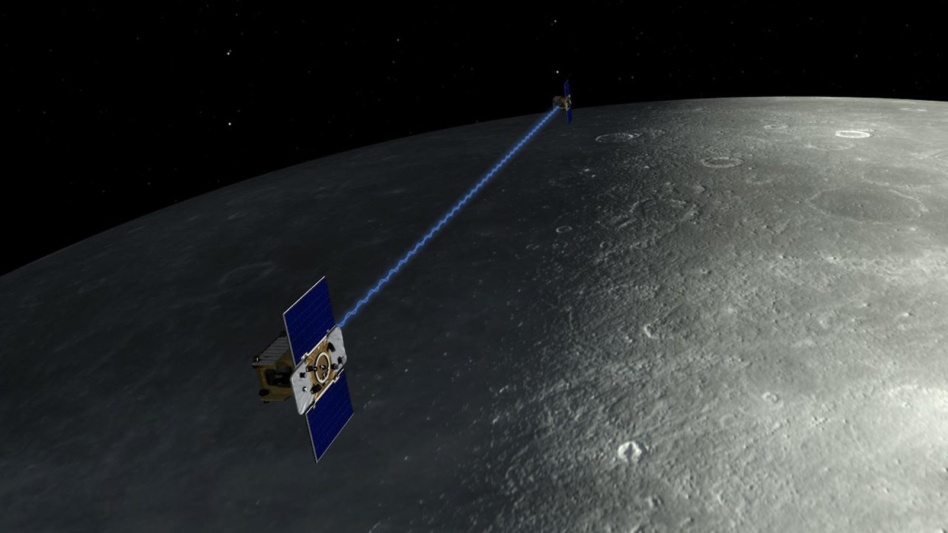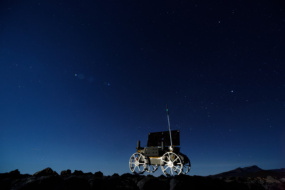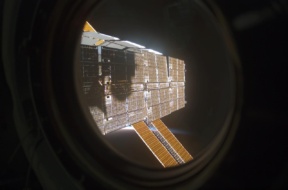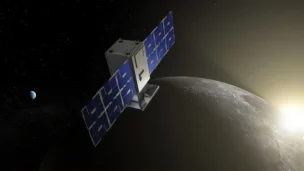DARPA wants industry to design a small orbiter to map water ice across the Moon—and test technologies for autonomous navigation in perilously low lunar orbits.
Spot the ice: The program—Lunar Assay via Small Satellite Orbiter (LASSO)—seeks to design, test, build and deliver a spacecraft that can identify regions that are at least 90% likely to have at least 5% water. The data collection mission would span four years or less after arrival in lunar orbit, according to a program solicitation issued April 14.
“DARPA is aware these goals are aggressive,” the program description reads. “Several technical challenges will need to be considered and addressed to collect high-quality remote sensing data within the four-year time constraint.”
Flying low: DARPA also plans stress-test navigation and propulsion technologies crucial for operating in very low lunar orbits—as close as 6 miles (10 km) above the Moon’s surface—to collect data.
- Today’s lunar orbiters operate a bit farther away from the Moon’s surface. Maintaining stability in lower orbits requires constant spacecraft maneuvering due to the uneven lunar gravitational field, and limited Earth-based tracking.
- Mountains, craters and regions on the Moon that were heavily bombarded by asteroids over eons exert a stronger pull than their surroundings, leading to pockets of uneven gravity that destabilize spacecraft orbits.
- To navigate effectively, each spacecraft will likely need sophisticated models to predict how it will be pulled and to automatically make corrections.
- LASSO performers should leverage previous NASA missions and explore alternative ways to get trajectory updates beyond the Deep Space Network, according to DARPA.
What’s next: Interested companies should submit their abstract and rough cost estimates to DARPA by May 27.




